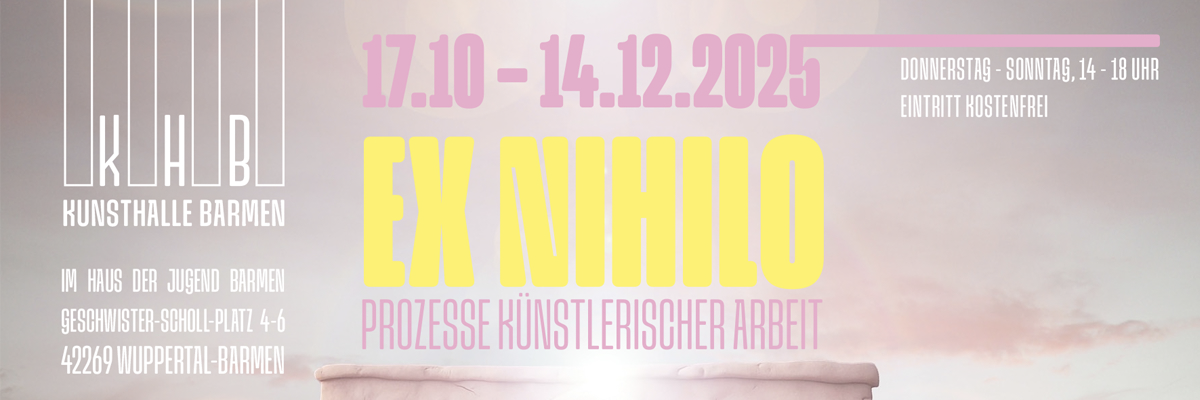
Zuzanna Czebatul
The Lunatic Fringe
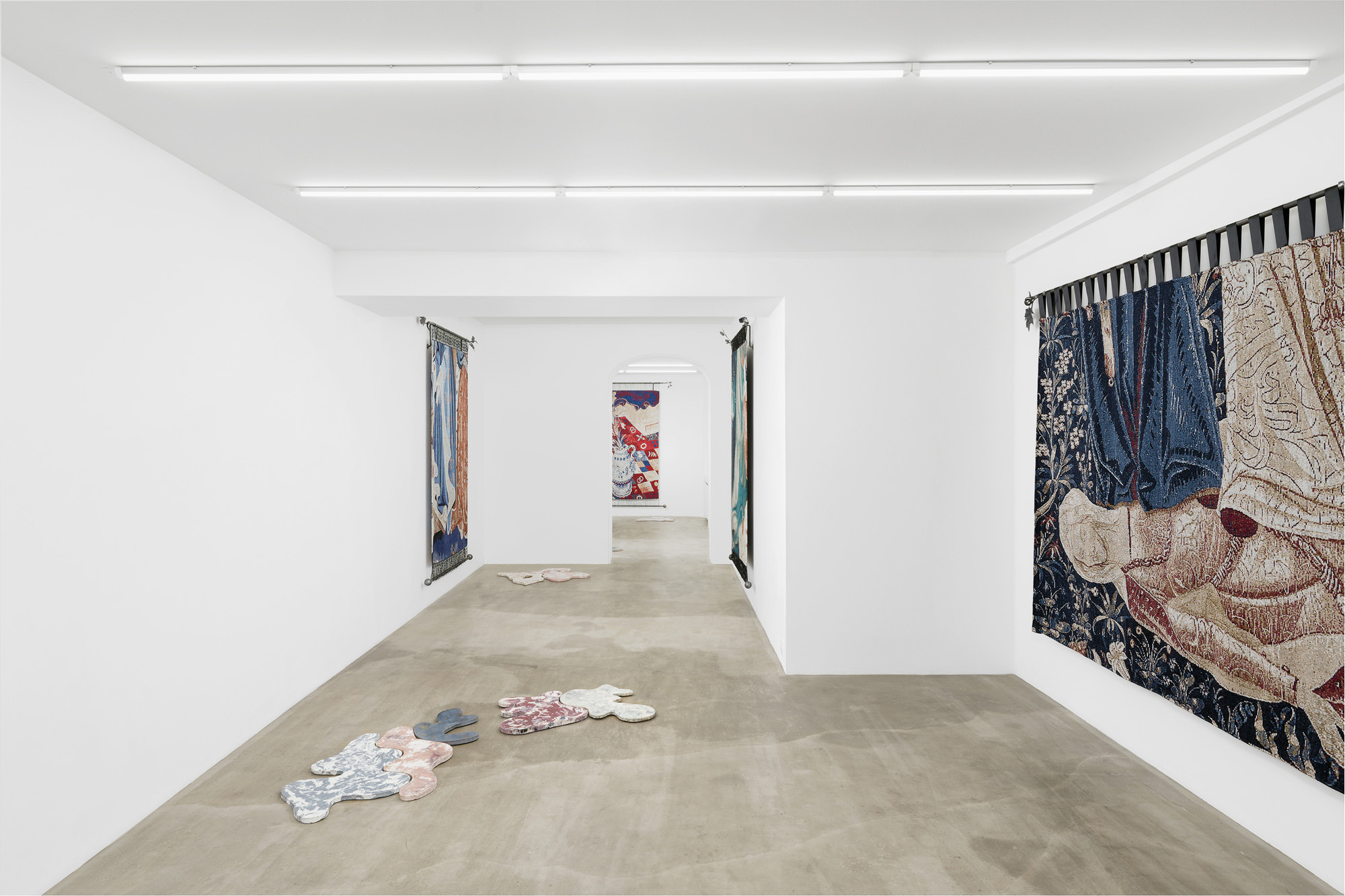
Zuzanna Czebatul, The Lunatic Fringe, 2023, exhibition view, Sans titre, Paris
Advertisement

Zuzanna Czebatul, A Trillion Threads Still Weaving (Four Veils), 2023, cotton, polyester, steel, 220 x 420 x 10 cm, unique

Zuzanna Czebatul, A Trillion Threads Still Weaving (Four Veils) (details), 2023, cotton, polyester, steel, 220 x 420 x 10 cm, unique
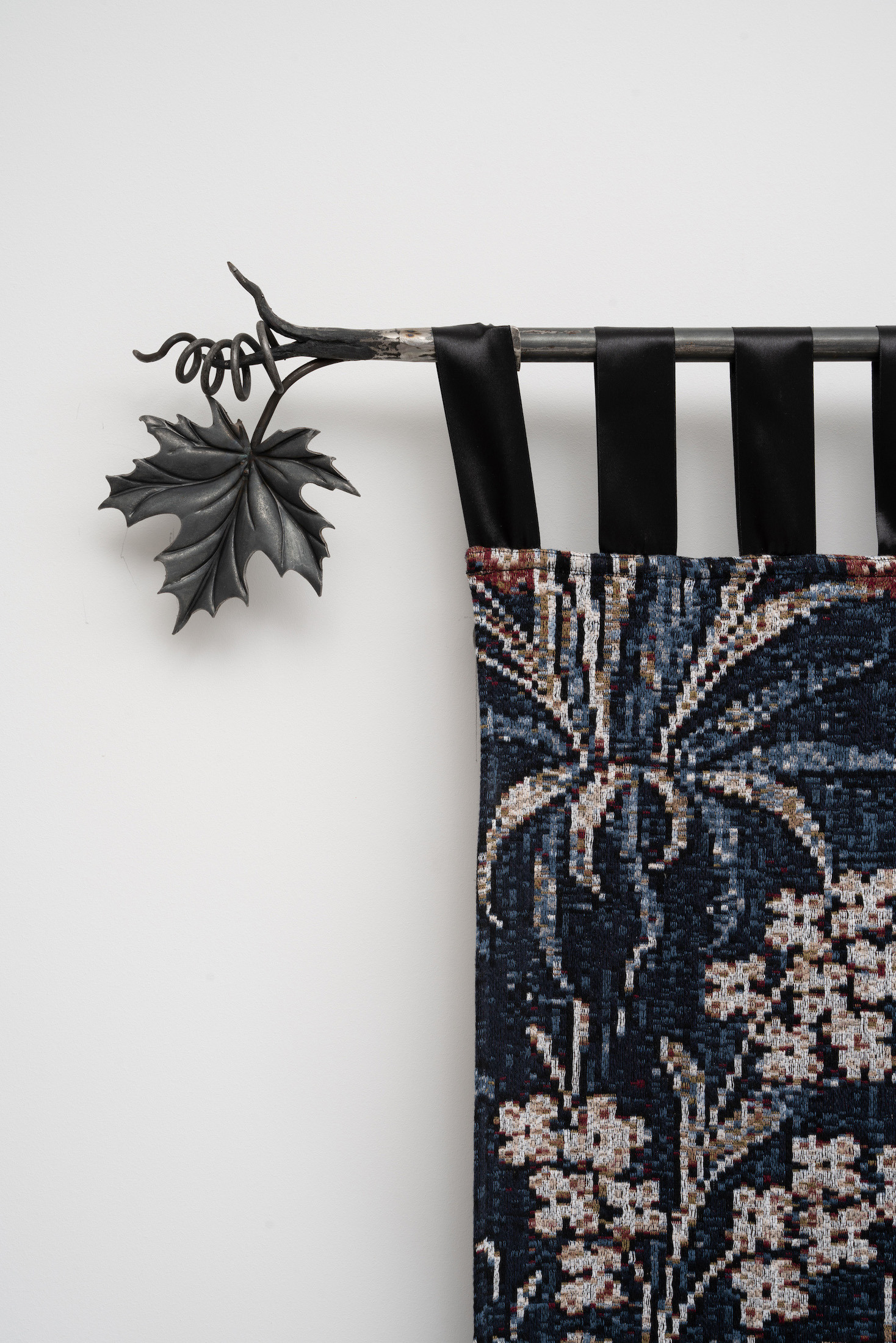
Zuzanna Czebatul, A Trillion Threads Still Weaving (Four Veils) (details), 2023, cotton, polyester, steel, 220 x 420 x 10 cm, unique

Zuzanna Czebatul, Concrete Shapes Of A Random Mosaic I & II, 2023, sand, cement, pigments, 105 x 80 cm & 80 x 54.5 cm, unique
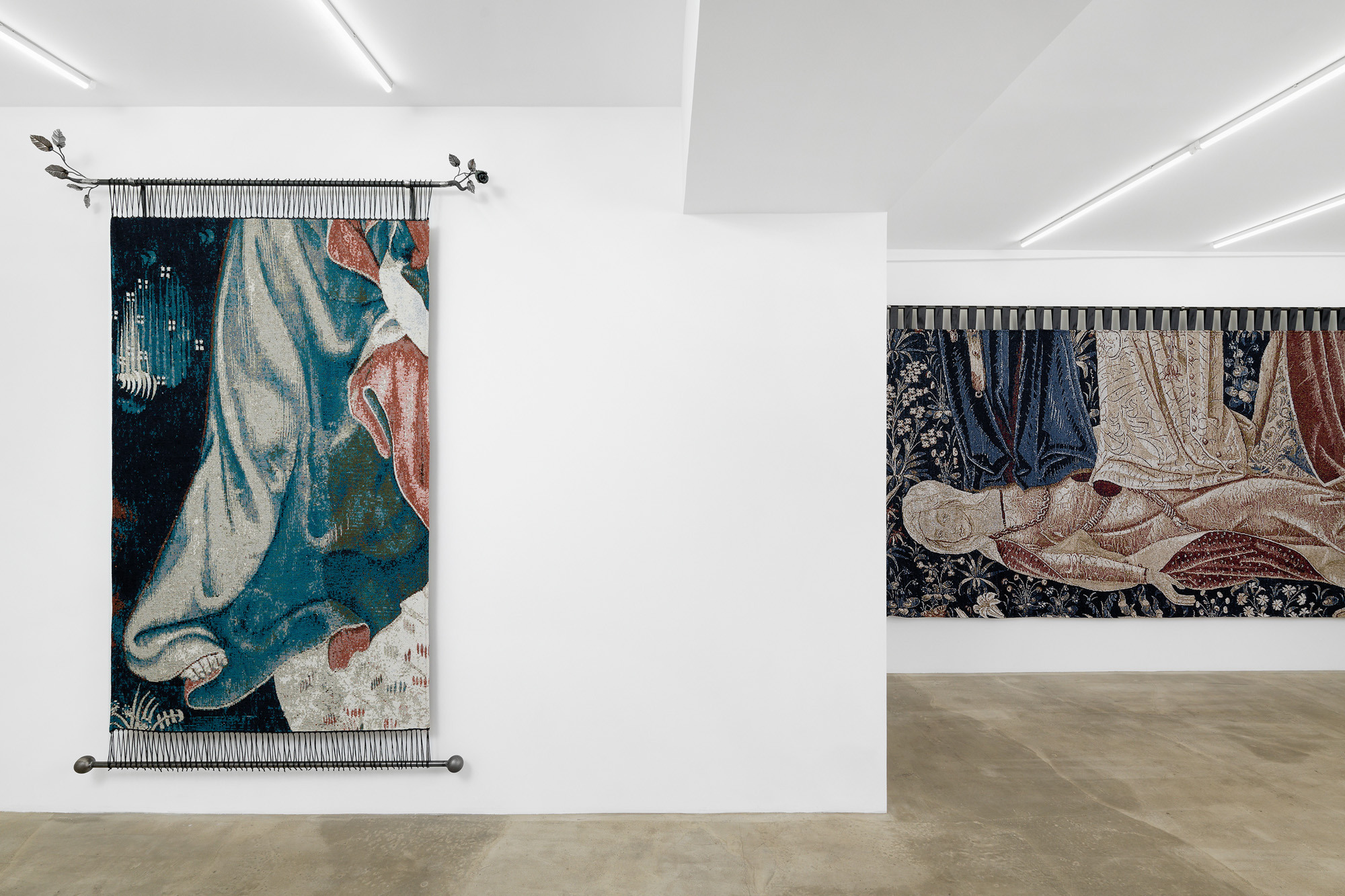
Zuzanna Czebatul, The Lunatic Fringe, 2023, exhibition view, Sans titre, Paris
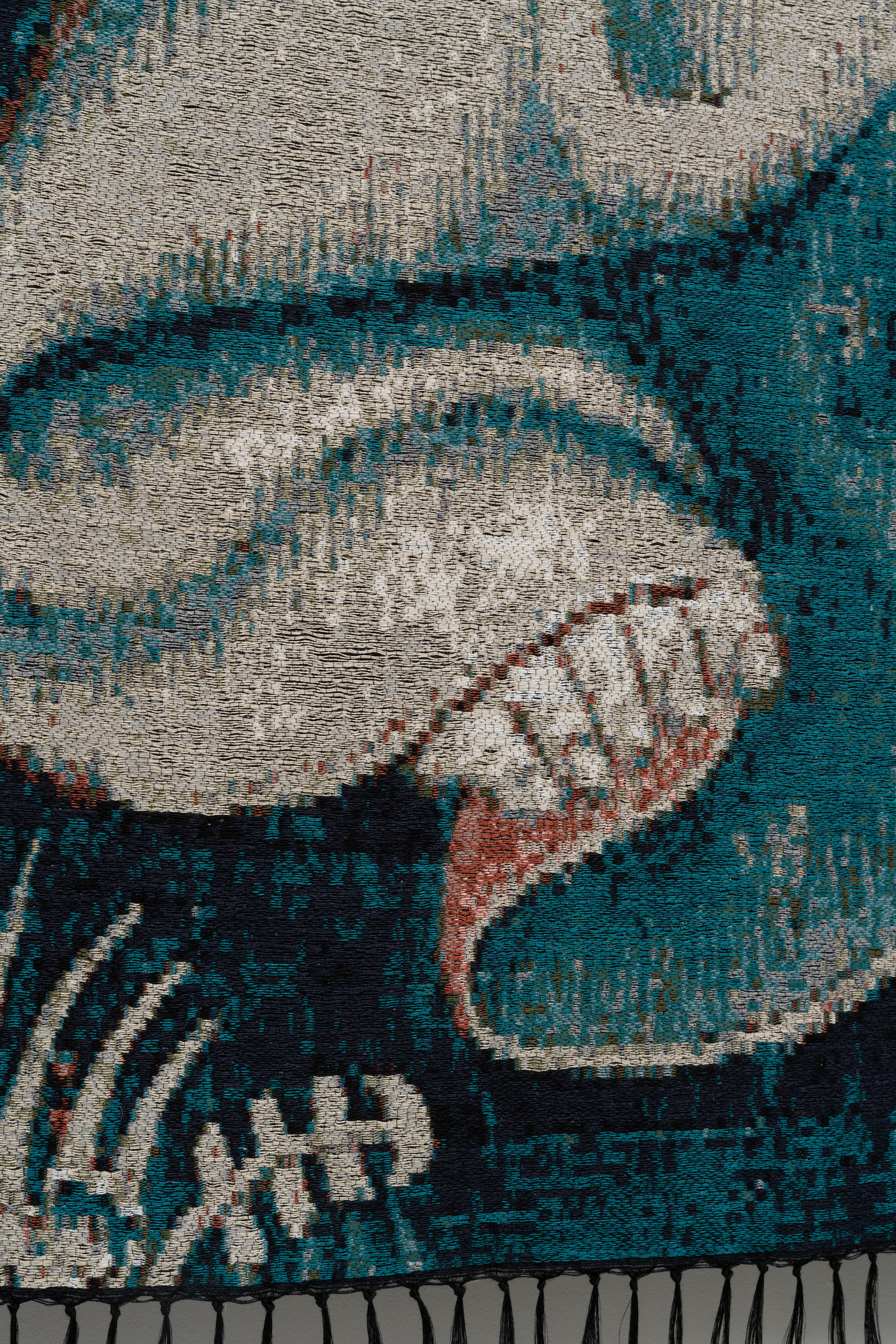
Zuzanna Czebatul, A Trillion Threads Still Weaving (Green Veil) (details), 2023, cotton, polyester, steel, 220 x 165 x 10 cm, unique
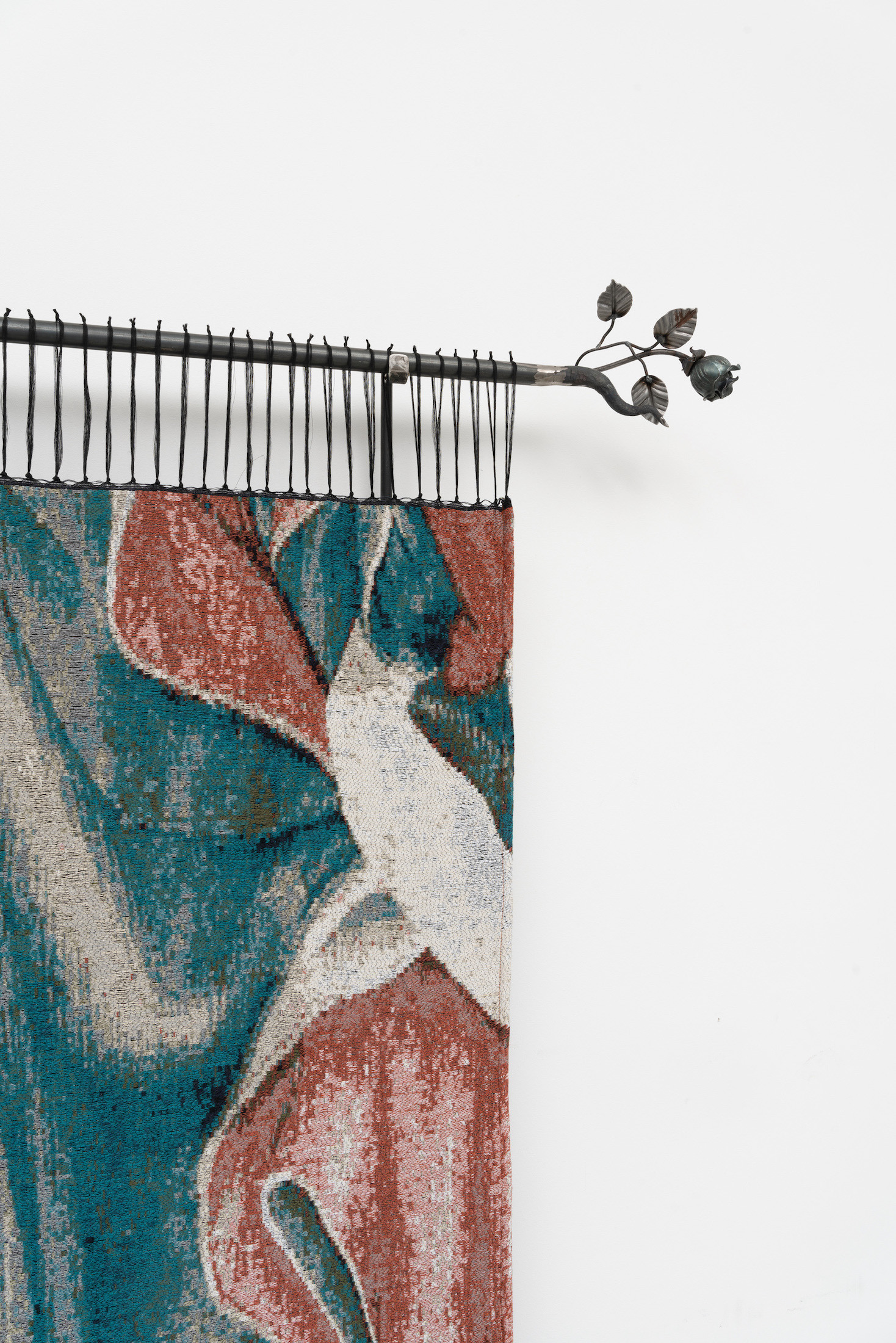
Zuzanna Czebatul, A Trillion Threads Still Weaving (Green Veil) (details), 2023, cotton, polyester, steel, 220 x 165 x 10 cm, unique
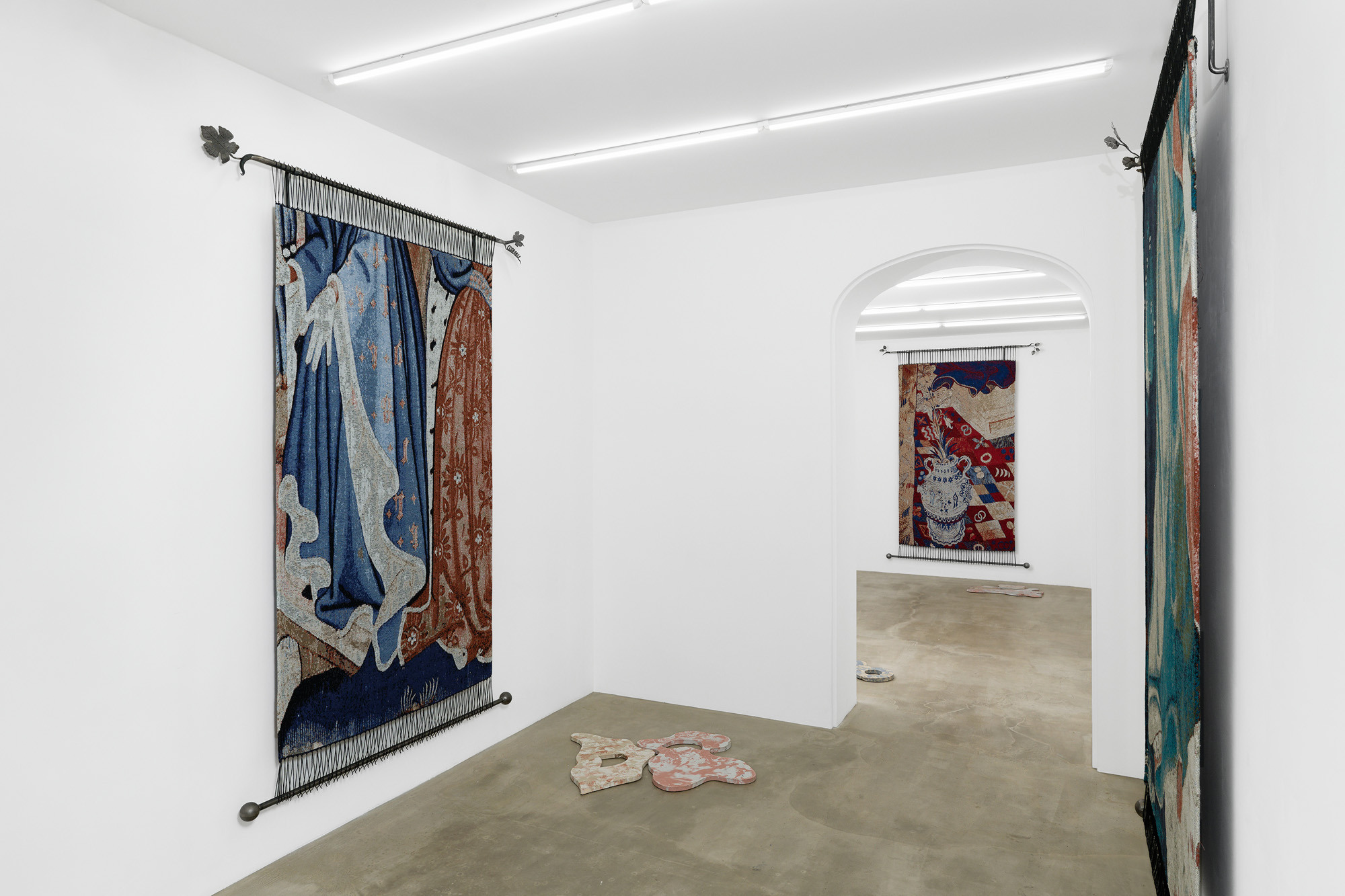
Zuzanna Czebatul, The Lunatic Fringe, 2023, exhibition view, Sans titre, Paris

Zuzanna Czebatul, A Trillion Threads Still Weaving (Two Veils), 2023, cotton, polyester, steel, 220 x 165 x 10 cm, unique

Zuzanna Czebatul, A Trillion Threads Still Weaving (Two Veils) (details), 2023, cotton, polyester, steel, 220 x 165 x 10 cm, unique
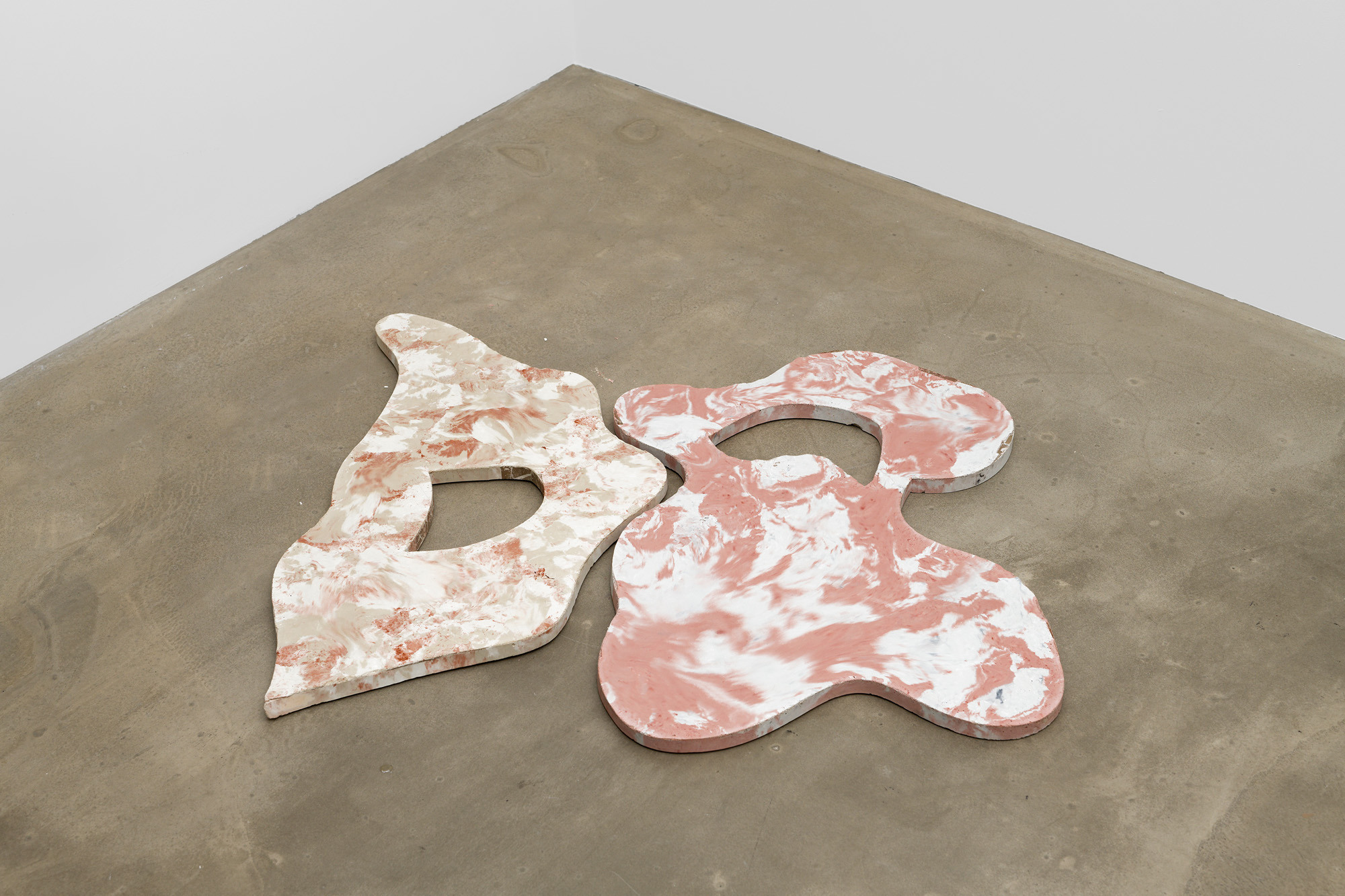
Zuzanna Czebatul, Concrete Shapes Of A Random Mosaic III, 2023, sand, cement, pigments, 68 x 80 cm, unique
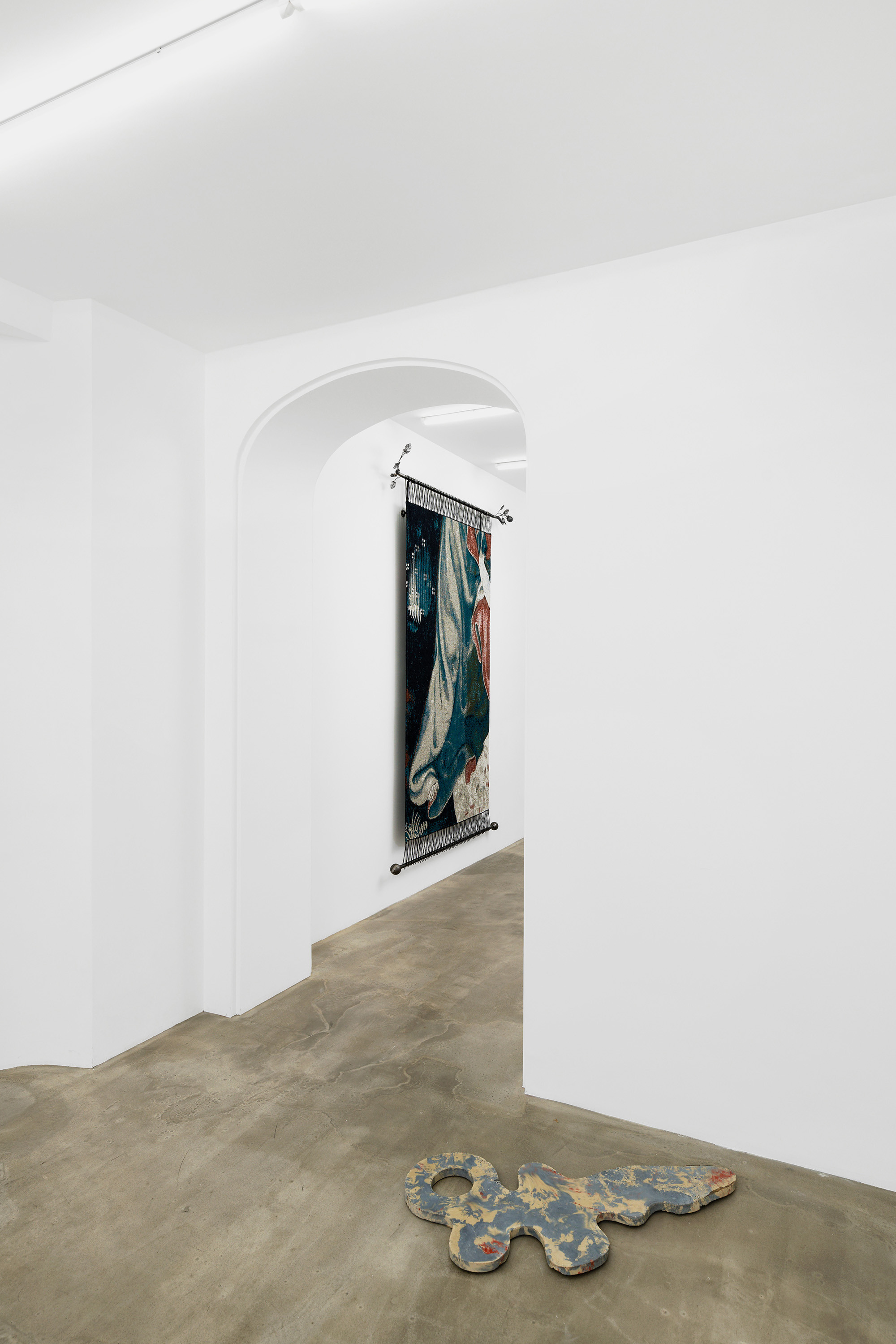
Zuzanna Czebatul, The Lunatic Fringe, 2023, exhibition view, Sans titre, Paris
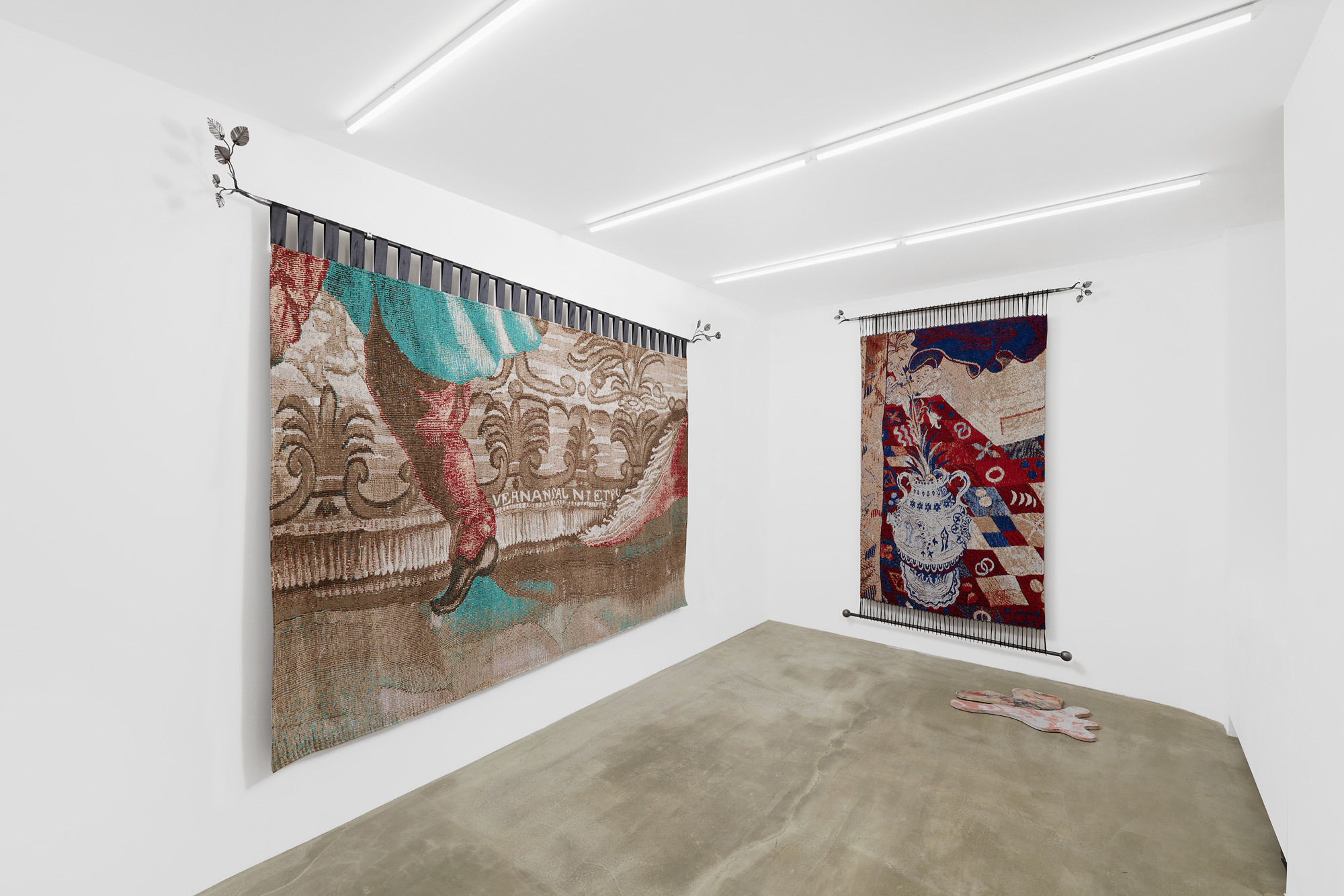
Zuzanna Czebatul, The Lunatic Fringe, 2023, exhibition view, Sans titre, Paris
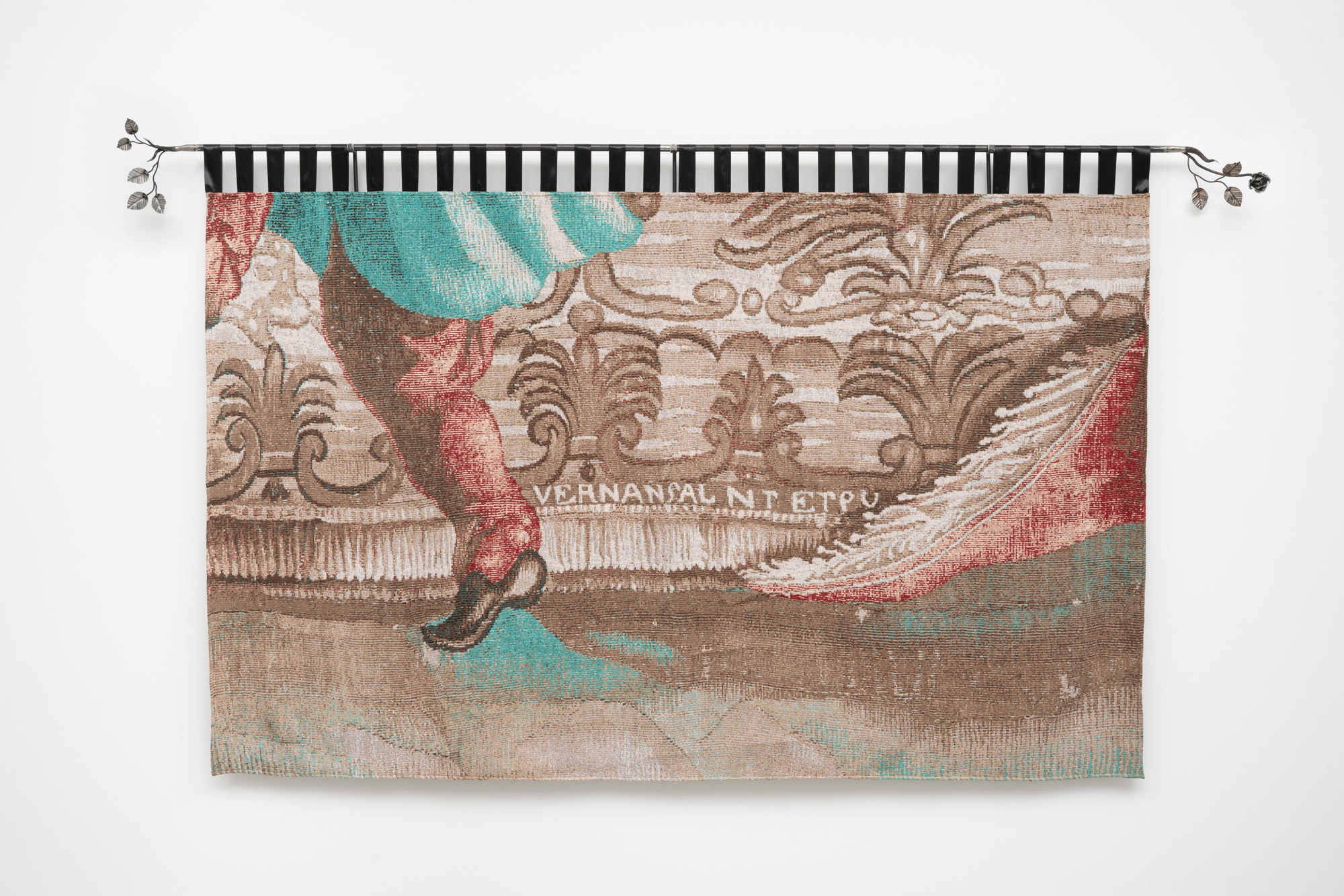
Zuzanna Czebatul, A Trillion Threads Still Weaving (Red Sock), 2023, cotton, polyester, steel, 210 x 330 x 10 cm, unique
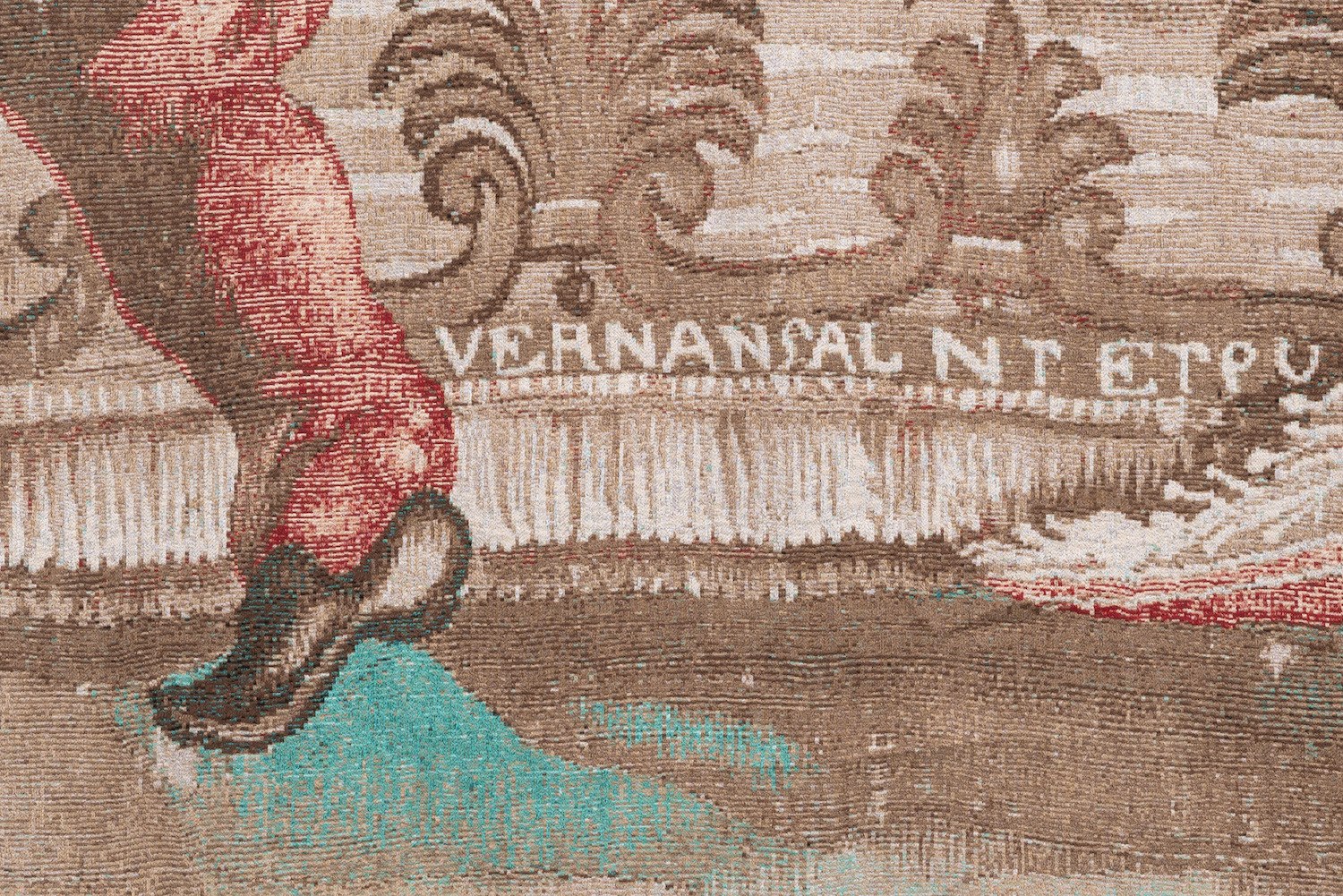
Zuzanna Czebatul, A Trillion Threads Still Weaving (Red Sock) (details), 2023, cotton, polyester, steel, 210 x 330 x 10 cm, unique
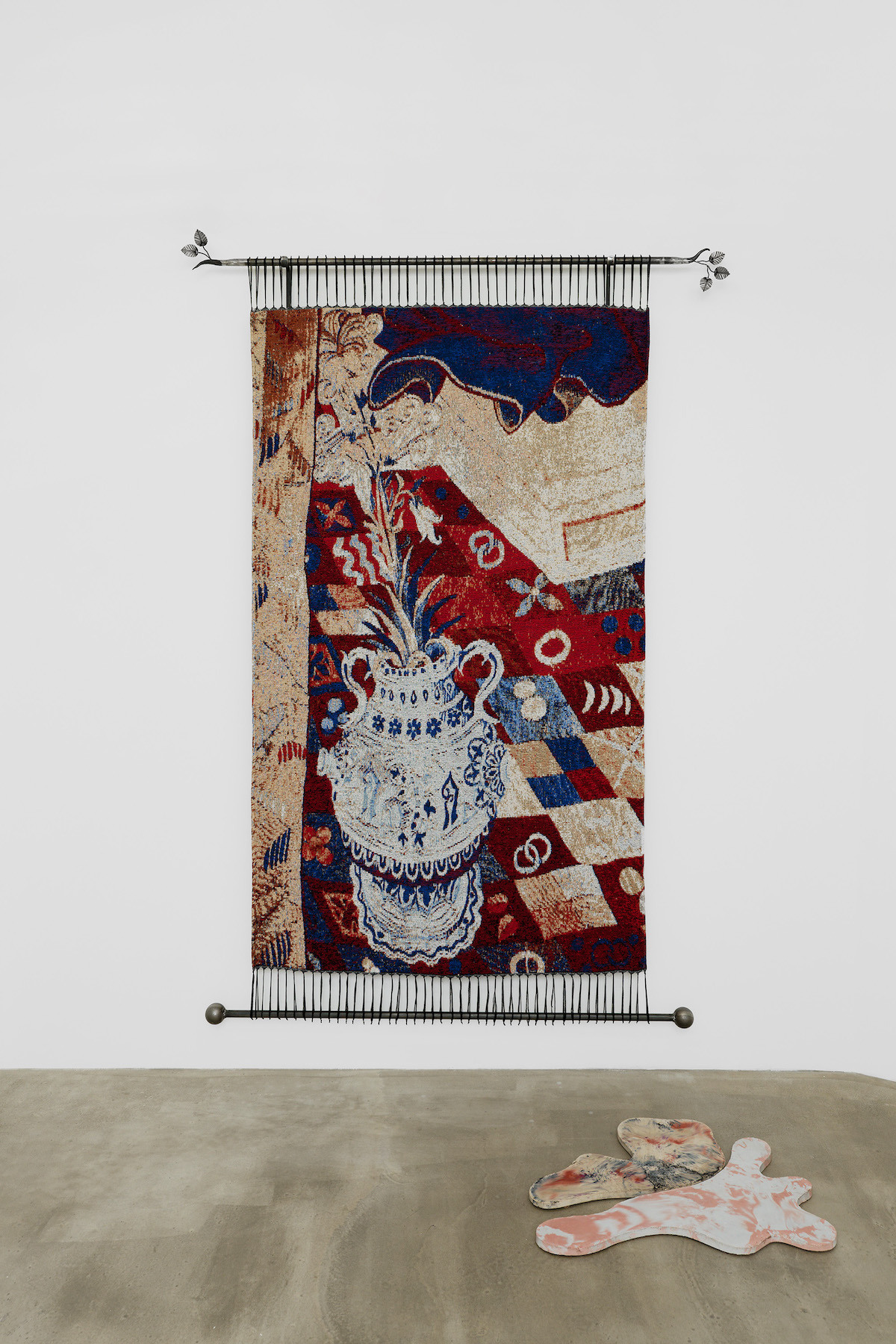
Zuzanna Czebatul, The Lunatic Fringe, 2023, exhibition view, Sans titre, Paris

Zuzanna Czebatul, A Trillion Threads Still Weaving (Blue Veil) (details), 2023, cotton, polyester, steel, 220 x 165 x 10 cm, unique
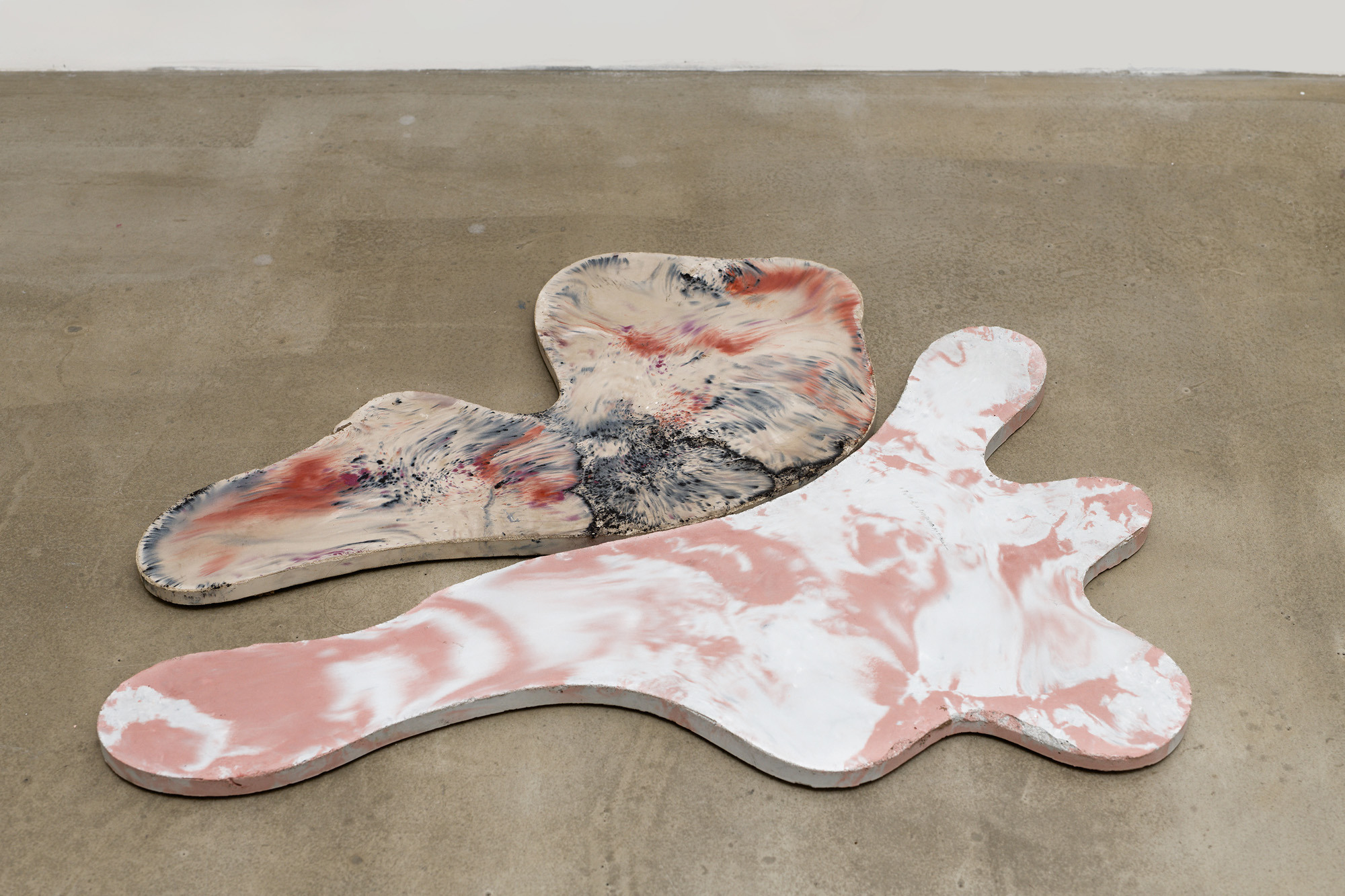
Zuzanna Czebatul, Concrete Shapes Of A Random Mosaic V, 2023, sand, cement, pigments, 73 x 62 cm, unique
“The reality and reliability of the human world rest primarily on the fact that we are surrounded by things more permanent than the activity by which they are produced, and potentially even more permanent than the lives of the authors.”
Hannah Arendt on The Human Condition
For her second exhibition at Sans titre, Zuzanna Czebatul presents a new series of monumental tapestries and floor-based sculptural pieces. If Czebatul has produced fabric works in the past - one thinks, notably, of the carpet that covered the entry hall of the Cologne art fair in 2018 - tapestry is a new medium for the artist, who pursues upon it her reflections on hegemonic western power structures. With an openly feminist and queer perspective, the artist takes interest in the manner in which our thoughts are constructed by narratives that have been handed-down to us, and by those that we recount in turn.
As with other previous works, Czebatul dips once more into art history to capture our present conditions. The images represented on each textile work are blown-up details of ancient tapestries, dating from the Middle Ages to roughly AD 1600. These close-ups are concentrated on the lower parts of the compositions, at times allowing a glimpse of a foot, a fetishist motif with a long iconographic tradition. For Czebatul, who previously reproduced the foot of the sculpture of the Bismarck national monument in Berlin’s Tiergarten, the foot is a symbol of patriarchal power and systemic violence. It’s also an image of mobility, not only that of bodies, but also that of cultures, knowledges, and crafts, as exemplified by the art of tapestry, a medium that circulated throughout Europe and beyond, hybridizing along the way. The enlargements focus the gaze on details of robes or draperies, which creates an illusion of volume and provokes a sort of mise en abyme effect, of textile represented by textile.
The close-ups were drafted from reproductions, often of low resolution, found in books or on the internet, which Czebatul then reproduced again at a large scale. From the second to the third dimension, from the analog to the digital, these transitions enacted by the artist recall that every image, as polished as it might seem, possesses a material structure and is fabricated, whether by the artisans of the past or by the machines of today. Deconstructing the material characteristics of ancient works is above all, for Czebatul, a way to reveal the hidden meanings of cultural symbols.
Historically, tapestries in castles had an acoustic function, insulating rooms of great dimensions. They were thus directly linked to the architecture of sites where they were exhibited. Like the paintings with which they shared the walls, they were markers of power and wealth and attested to the politics of their epoch and the allegiances of their owners. But contrary to paintings that served the same function of testimony or propaganda, tapestries could easily be rolled up and stored, in such a way that they were often replaced with others. Owners had new tapestries made to follow changing fashions but also to transmit new beliefs or ideologies. The Gobelins Manufactory in Paris thus participated in the history of the monarchies and the formation of national identities. Today still, decoration and architecture are intimately connected and form structures of domination that condition our perceptions and our actions. Inside Sans titre, the new tapestries have a disproportionate size and their outdated grandiloquence undermines the authority of the “white cube.”
On the floor, colored cement forms recall the flooring of a church or cathedral. Czebatul draws inspiration from an ancient technique called opus sectile that consists of using pieces of cut marble to create decorative pavements. Widely used during the Roman Empire, this marble marquetry was a prestigious artistic technique, signaling opulence and power. Just as her fragments of ancient tapestries were reproduced with digital and industrial techniques, Czebatul employs here a cheap mass production material - cement - to create a trompe-l’oeil marble effect. The shapes of the pieces on the floor are inspired by the biomorphic forms of Jean Arp. If the latter were produced through chance and intuition, those of Czebatul are entirely premeditated.
In the exhibition, works and techniques from the past with auratic power are presented as trompe-l’oeil, or fragmentary facsimiles. Czebatul appropriates loaded symbols and questions the pretense of the original to remind us of the transformational power of things - for the better or for the worse, as in the case of historical revisionism. The expression “lunatic fringe” that the artist chose for her title describes a minority with irrational beliefs. It was notably used by Theodor Adorno to speak of rightwing extremists. According to the philosopher, deviant or pathological ideas of this “lunatic fringe” are not so distinct from the opinion of the masses, but in reality form an integral part of it. Extremism in this sense is no more than a symptom of an underlying dysfunctional system. In refering to this idea of one of the founders of the Frankfurt school, Czebatul suggests that extremism lives at the heart of our histories and in our most expensive decor.
Devrim Bayar



